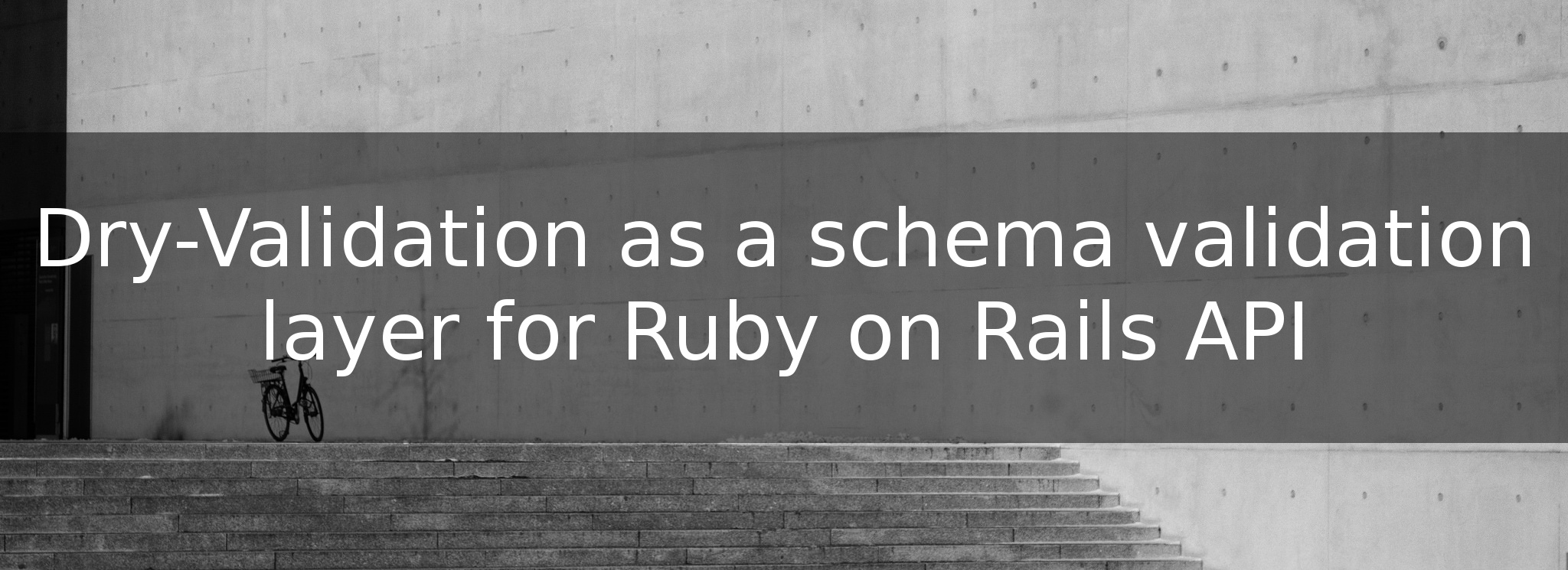Legacy code is never the way we would like it to be
There are days, when you don't get to write your new shiny application using Grape and JSON-API. Life would be much easier, if we could always start from the beginning. Unfortunately we can't and one of the things that make some developers more valuable that others is their ability to adapt. The app might be outdated, it might have abandoned gems, but if you're able to introduce new concepts to it (without breaking it and having to rewrite everything), you should be able to overcome any other difficulties.
ActiveRecord::Validations is not the way to go
If you use Rails, then probably you use ActiveRecord::Validations as the main validation layer. Model validations weren't designed as a protection layer for ensuring incoming data schema consistency (and there are many more reasons why you should stop using them).
External world and its data won't always resemble your internal application structure. Instead of trying to adapt the code-base and fit it into the world, try making the world as much constant and predictable as it can be.
One of the best things in that matter is to ensure that any endpoint input data is as strict as it can be. You can do quite a lot, before it gets to your ActiveRecord models or hits any business logic.
Dry-Validation - different approach to solve different problems
Unlike other, well known, validation solutions in Ruby, dry-validation takes a different approach and focuses a lot on explicitness, clarity and precision of validation logic. It is designed to work with any data input, whether it’s a simple hash, an array or a complex object with deeply nested data.
Dry-validation is a library that can help you protect your typical Rails API endpoints better. You will never control what you will receive, but you can always make sure that it won't reach your business.
Here's a basic example of how it works (assuming we validate a single hash):
BeaconSchema = Dry::Validation.Schema do
UUID_REGEXP = /\A([a-z|0-9]){32}\z/
PROXIMITY_ZONES = %w(
immediate
near
far
unknown
)
required(:uuid).filled(:str?, size?: 32, format?: UUID_REGEXP)
required(:rssi).filled(:int?, lteq?: -26, gteq?: -100)
required(:major).filled(:int?, gteq?: 0, lteq?: 65535)
required(:minor).filled(:int?, gteq?: 0, lteq?: 65535)
required(:proximity_zone).filled(:str?, included_in?: PROXIMITY_ZONES)
required(:distance) { filled? & ( int? | float? ) & gteq?(0) & lteq?(100) }
end
data = {}
validation_result = BeaconSchema.call(data)
validation_result.errors #=> {:uuid=>["is missing"], :rssi=>["is missing"], ... }
The validation result object is really similar to the validation result of ActiveRecord::Validation in terms of usability.
Dry Ruby on Rails API
Integrating dry-validation with your Ruby on Rails API endpoints can give you multiple benefits, including:
- No more strong parameters (they will become useless when you cover all the endpoints with dry-validation)
- Schemas testing in isolation (not in the controller request - response flow)
- Model validations that focus only on the core details (without the "this data is from form and this from the api" dumb cases)
- Less coupling in your business logic
- Safer extending and replacing of endpoints
- More DRY
- Nested structures validation
Non-obstructive data schema for a controller layer
There are several approaches you can take when implementing schema validation for your API endpoints. One that I find useful especially in legacy projects is the #before_action approach. Regardless whether #before_action is (or is not) an anti-pattern, in this case, it can be used to provide non-obstructive schema and data validation that does not interact with other layers (like services, models, etc.).
To implement such protection, you only need a couple lines of code):
class Api::BaseController < ApplicationController
# Make sure that request data meets schema requirements
before_action :ensure_schema!
# Accessor for validation results hash
attr_reader :validation_result
# Schema assigned on a class level
class_attribute :schema
private
def ensure_schema!
@validation_result = self.class.schema.call(params)
return if @validation_result.success?
render json: @validation_result.errors.to_json, status: :unprocessable_entity
end
end
and in your final API endpoint that inherits from the Api::BaseController:
class Api::BeaconsController < Api::BaseController
self.schema = BeaconSchema
def create
# Of course you can still have validations on a beacon level
Beacon.create!(validation_result.to_h)
head :no_content
end
end
Summary
Dry-validation is one of my "must use" gems when working with any type of incoming data (even when it comes from my other systems). As presented above, it can be useful in many situations and can help reduce the number of responsibilities imposed on models.
This type of validation layer can also serve as a great starting point for any bigger refactoring process. Ensuring incoming data and schema consistency without having to refer to any business models allows to block the API without blocking the business and models behind it.
Cover photo by: brlnpics123 on Creative Commons 2.0 license. Changes made: added an overlay layer with an article title on top of the original picture.
